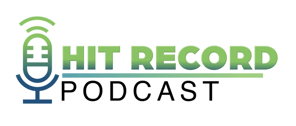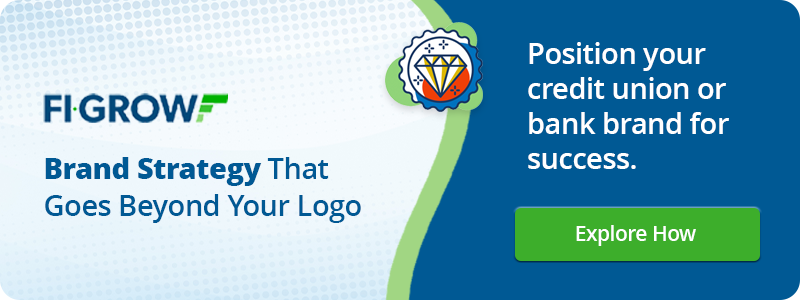Episode 87 - Guest Sam Paxson Talks Member vs. Product Centric Approach to Growing Your Credit Union or Community Bank


Don't Miss An Episode, Subscribe Now

In this engaging podcast, Meredith Olmstead, CEO of FI GROW Solutions, speaks with Sam Paxson, founder of the Power & Light Collaborative and a seasoned expert in the credit union industry. They explore transformative strategies for banks and credit unions to shift from product-centric to member-centric models, focusing on leveraging digital tools to align services with member needs and behaviors for enhanced engagement and growth.
Key Takeaways:
-
Embracing Member-Centric Strategies: Sam discusses the critical shift from evaluating product line performance to understanding member engagement and the lifetime value of members, advocating for a strategy that focuses on member needs rather than just financial products.
-
Data-Driven Member Engagement: Utilizing behavioral data and digital tools to customize interactions and offerings, which helps in actively engaging members based on their interactions and preferences.
-
Re-engagement through Digital Innovation: The importance of digital tools in reactivating dormant members and enhancing the member experience, ensuring that members fully utilize available financial services.
Transcription:
Meredith Olmstead:
Hi, there. I'm Meredith Olmstead, CEO and founder of FI GROW Solutions. We are a digital marketing and sales and lending support agency. We work exclusively with community banks and credit unions, and I have a real treat for us today. Today, I have with me Sam Paxson and she is a legend in the credit union space. Sam was formerly the chief experience officer of Co-op Solutions, and she's recently gone out and started some amazing new endeavors. One of those is an advisor in residence with EY, that's what she's currently doing. And she's also the founder of the Power & Light Collaborative. So Sam, tell me really quickly, what is the Power & Light Collaborative in just a couple quick sentences for everybody?
Sam Paxson:
Sure. And it's so great to be here, Meredith. Thank you for having me. The Power & Light Collaborative is a growth strategy and activation firm. We help credit unions, community banks, and fintechs find the points of blockage to their growth and find the opportunities for them to really connect with their buyer. So we do this for a blend of strategy, go-to-market, CX and sales. And really bring that together in a way that can ensure that those organizations are really designed for their consumer and their buyer.
Meredith Olmstead:
Nice. Awesome. So Sam and I met in person for the first time this fall, this past fall. It's 2024 at the MAC, Marketing Association of Credit Unions annual meeting in Los Angeles. She was one of our keynotes and we decided we would get back together and kind of chat all things members and credit unions. And so that's what we wanted to do. I'm going to hit record today on this quick conversation and just chat a little bit, kind of high level about how Sam really helps credit unions throughout her entire career and now in consulting become more member centric in how they're approaching growth and staying relevant in the digital space. And not just the digital space obviously, but really everywhere, but our focus is digital. So that's kind of how she and I approached this conversation at least. So talk a little bit about that, Sam, like in terms of member centric versus product centric. Unpack that for us a little bit.
Sam Paxson:
That's really interesting. I mean, in the credit union and banking space, we tend to look at product line performance. I serve on the board of a credit union and serve on the board of two fintechs, and we take a look at how is each product performing from a financial standpoint, and we look at that and then we look at member deposit growth. The interesting part is that on my FinTech board calls, they look at the lifetime value of a member, of the consumer. And we're not understanding now in a digital first environment how our solutions all come together to drive member engagement, member utilization and further penetration of all of those products for your member base. So a typical credit union might have 60,000 members, but we sometimes lie to ourselves and say, oh yeah, we have 60,000 members, but maybe half of those are actually using the credit union to its full potential. And maybe that might even be generous. So how do we understand which solution sets, which use cases should be part of credit unions investment, and how are those members actually interacting with those products?
So to make sure that these are not dormant members, but fully active members that are completely utilizing the financial institution. And just looking at it from a product centric perspective and where we should be investing is a missed opportunity to fully realize the growth potential of the credit union. This is why we're seeing us not hit the ROA targets that we're supposed to be hitting. We're at actually about 2,008 levels in terms of return on assets. And this is something that we need to remedy if we're going to be continually viable and a vibrant part of the financial services space in the United States today.
Meredith Olmstead:
Yeah, it's funny when we talk with clients about a lot of this, it's really about authentic re-engagement efforts with some of those members that are either dormant or they never really were members in the first place. They came to you in an indirect method or means through a lending opportunity. They probably barely even knew your name, made the payments and moved on or have gotten almost to the end of that relationship. Or they opened a share account in a family household and then it never really went anywhere or something along those lines, moved, whatever it could be. But there are a lot of really powerful ways that you can use like digital tools and the digital environment to try to re-engage people when they are around your digital assets.
And I think if you have really great CRM or content management systems that have a lot of that capability built in, if you see one of those "dormant members" active in any way, you can jump right on that through automation and other ways to try to take advantage of those opportunities. It's definitely something at least for people to consider. Yeah, you were talking about that. We were also talking about this before we hit record. It is so funny that you say Product P&L versus Member P&L. I cannot tell you how many clients and credit unions that we talk to and come in contact with who have no idea the average lifetime value of a member. Is there any tips you can offer around coming up with some of those numbers? I mean, you have to start somewhere, right?

Sam Paxson:
Well, I think what you do is you start looking at... I mean, you start looking at who is your current member, who's your current member base, and how are they utilizing the credit union? What are their behaviors? You look at the data in terms of what products are they using, what are their journeys across the credit union? What's the new member onboarding journey? What's the spending journey? What's the wealth journey? What is the lending journey? Instead of looking at it product line by product line, by product line, how do we turn those verticals horizontal and really understand how should the member be fully utilizing the credit union?
And there's a lot of shiny object fun in the credit union space. We're looking for what's the next product that we should offer that creates engagement. But the real work is in deeply understanding your current member base and focusing on that current member base and get them engaged and utilizing the credit union. Get them maximizing all of your products and services, and then get to the next, what's the new market you should enter and the new market you should enter, and what's the revenue potential based on that?
And then able to look at it from that perspective. Typically, you look at... In the tech side of the world, they look at what's the customer acquisition cost and what's the lifetime value? And that's how they're measured to get the margin right. So we're really looking at it from a different point of view. And our set of assumptions have changed in this industry. I think we haven't quite realized it or we're starting to realize it and we're playing catch up. This is deeply based on member needs.
What is the member trying to do at the credit union and how do you make sure they do it with you and not with all of the other options that are available to them in the market. So we have to really look at things from their point of view, not from ours. And we tend to look at things from what is going to bring us the most upside like loans. We look at what's the product profitability and the things that make us... That have the greatest impact for the credit union. And this is very much in our DNA in the credit union space that we're about member well-being. How do we make sure that we're prioritizing interaction models, the right use cases for short-term financial performance in addition to the products that bring long-term financial performance and the higher benefit to the credit union.
Meredith Olmstead:
Yeah, and don't miss those opportunities to continually engage new members or members who are trying a new product or who have been active recently. We have so many clients who don't have a super robust, smart, personalized onboarding program to bring a member deeper into the institution, really try to differentiate themselves when they've opened their first product or opened their first account. That is when you have to strike. You got to strike while the iron is hot and really make sure that you personalize what you're showing them, especially younger members. You're not trying to sell them something they already have. If they've already closed an auto loan, there's no reason to continually talk about that unless you want them to... You have some incentive for maybe them to refinance another one with you or place a pre-approved small credit card with you or consider a small personal loan of some kind. All those things are additional products that it's a great opportunity to kind of get in front and meet their needs right then when they know you not wait around and twiddle your thumbs and hope. Yeah. Yeah.
Sam Paxson:
And it's how you bundle those solutions together and engage with them so that it would be a seamless experience for them to receive them. So many credit unions kind of put marketing in a box over here. Marketing is the tip of the spear. And I don't like to use the word because it's kind of seen in an old school fashion. It's our advertising and it's our branding. It is not that, it is your member engagement model. What is your member engagement model? Is it through the app? How are you serving content through the app based on where the member is in their life cycle with you? What should you be serving up to them? How do you make sure that you have ongoing content that gets them to engage with you and understand your value proposition for their life? And we tend to think of things in product delivery from our perspective. You have to think it from their lifestyle.
And this is how organizations like Chime have doubled to the size of Navy within 10 years is that they focus on short-term needs. And from our perspective in the credit union space, short-term needs don't always pay off on the ways that we have made money as an industry. And so it's a little bit at odds with how we serve members and help them. So this is the opportunity for us to rethink our value proposition, the way that we deliver that value, the solutions that we put together to deliver that value and how we look at that from a short-term perspective for the short-term financial performance of the consumer and the short-term financial performance for the credit union versus the long-term financial performance of the credit union and the long-term financial performance of the member. So they go very much hand in hand.
Meredith Olmstead:
Yeah, we talked about... And I think the last thing we were going to finish on is really making sure that you're not just playing lip service to a lot of this either. That a lot of what we're talking about in terms of shifting into long term member centric approach to doing business requires reprioritizing some of your budgets. Especially in this day and age when every credit union is trying to drive their average member age down, right? But all of those younger members want incredibly robust member centric digital experiences. So you have to be reprioritizing budgets from a brand new brick and mortar every two to three years in order to expand a footprint to an incredibly robust. Say, digital branch or website or new app that gives you all of the budgeting and the smart money features that these younger people are really looking for. And I think those budget priorities have to shift along with these approaches to focusing on the member.
Sam Paxson:
Yeah, exactly. And that just is... It's just been a different way of operating than we have. And we operate in these kind of functional silos. It requires that those functional silos come together in a new way in order to cooperate and collaborate to solve, to understand the member, serve up the right solutions for the member and do it in the most elegant fashion to help drive the success of utilization for the member. So it's a totally different perspective and it requires some change management and transformation within the credit union. But I feel really good that credit unions can do this. I'm seeing it and there's so many tech providers out there that want to serve up the solutions that are helping credit unions to meet member needs, and it's really doing the thinking from the consumer's perspective to make those best strategic bets.
Meredith Olmstead:
Yeah, it's great stuff. I agree with you. And I think that the one thing that I've always known... I always love about the credit union industry having grown up in it with both my parents working in the industry, is that everybody's hearts are in the right places. So it's just a matter of lining up how you get to where you need to go. It's all very authentic. And you don't always get that in more profit driven types of industries where really it's only about bottom line. But I do think that most people in this industry really do care about the members. So if it means shifting a little bit to reposition priorities around life stages versus product life cycles and those kinds of things, I think people will get there.

Sam Paxson:
Well, I like that you said life stage. I would even take it a step further to say lifestyle. That life stage is yearly increments. Like what happens in your teens, what happens in your 20s, what happens... But you have to go through the, what's the daily lifestyle of a current consumer? And what are their daily needs? Because they're so empowered, they're so empowered to go elsewhere, and all they have to do is look at their phone-
Meredith Olmstead:
Just like that.
Sam Paxson:
And pull down a new app. And all of a sudden that use case is not with the credit union. So-
Meredith Olmstead:
You lose them immediately.
Sam Paxson:
Disintermediation and increasing dormancy where you kind of have your... You have a paycheck deposit parking lot that is the checking account or savings account, and they do everything else elsewhere. So you want their pay with you, that you want their wealth with you, that you want their investments with you, you want insurance with you. I mean, there's all of these use cases that we kind of bury 10 clicks down on our website.
And what I talked about at the MAC conference, I looked at the majority, I looked at many, many credit union websites and their apps, what they put there are loan rates, and that is what they are demonstrating as their value proposition. That's what we're demonstrating as our value proposition. It is one of our value propositions and being like, we're great rates, which is a way that we're helping the people, helping people. We're helping you get a great rate on a loan. How many people need loans at any given moment? What else do they need in their financial life? And how can credit unions be the choice for those things that they need so that you're engaging them on the daily while you get them for those long-term or they trust you for those long-term goals like a loan.
Meredith Olmstead:
Yeah. And those bigger commitments. Yeah.
Sam Paxson:
Yes. Yes.
Meredith Olmstead:
Awesome. Well, thank you so much, Sam. It's been great chatting about this. I know this is complicated stuff and I'm really excited to hear that you're out there working now with individual credit unions to help them kind of navigate some of these challenges for growth and staying relevant and member-centric in their approach. So I will make sure to share... When we share this podcast, I'll make sure to link to those efforts and so that people know how to reach out to you. And otherwise, if you all want to learn more about digital marketing, sales, and lending for banks and credit unions, please visit us at figrow.com. We have lots of other podcasts, blogs, case studies and resources for you to learn more and dig deeper into some of this. And otherwise, let's just get out there and make it happen.








Blog comments